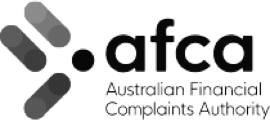The cashflow funding gap — the disparity between cash inflows and outflows — is very real, and it poses significant challenges for businesses aiming to grow and thrive.

Similarly, if you need funds to improve your cashflow position and reach your business goals, we’ll help you prepare the information a reputable finance provider (like Banjo) will need. This will ensure the application process is as prompt and responsive as possible.
While there is work involved to really understand your financial and cash position, we’ve found this to be a defining characteristic of good business practice.
Part One: Explaining the Gap to Your Clients
Business owners in the initial startup, or Launch, stage need to expect this lag between profit and sales cycles as a matter of course, as well as negative cashflow that dips even lower than profit due to the capitalisation costs in establishing the business. This is the make-or-break stage in a business lifecycle, with finance often received through investors or by the business owners selling assets and floating start-up costs themselves.
Cashflow can be an issue for entities in the next phase of a business lifecycle, the Growth phase, too. Additional cash is often required to scale up after acquiring a new contract, or to meet statutory payments like staff superannuation and tax liabilities that can crop up in the proceeding years after their business launch.
Key signs of a cashflow funding gap:
- Delayed Payments: Longer payment terms, late-paying customers and the burden of collecting outstanding invoices can significantly impact cashflow.
- High Operating Costs: High overhead costs – including rent, salaries, and utilities – can put a strain on cash reserves.
- Rapid Business Growth: Growth is desirable but it can lead to significant and immediate upfront investments, which may then outpace incoming revenue.
- Seasonal Sales Fluctuations: Businesses operating in seasonal industries often deal with irregular cashflow patterns throughout the year.
- Inventory Management: Capital tied up in slow-moving or obsolete stock can result in cashflow issues.
Addressing the cashflow funding gap:
- Improved inventory management: Efficient inventory management practices – such as just-in-time inventory or regular stock reviews – can help reduce inventory holding costs and free up working capital.
- Better seasonal planning: Careful planning for off-peak periods – including setting aside reserves during peak seasons to cover expenses during slow periods – helps smooth over the seasonal dips.
- Smarter resource optimisation: Identify where resources can be optimised, such as cross-training employees to handle multiple tasks or outsourcing certain functions to minimise fixed costs.
- Diversification: Exploring new markets or product lines can help mitigate the impact of seasonal fluctuations, as well as reduce dependency on a single revenue stream.
While implementing the above strategies can improve cashflow, SMEs may still encounter funding gaps. In such situations, securing a business loan with a lender like Banjo can be an effective solution.
As opposed to a personal loan or mortgage facility, there are some important processes you need to employ in preparing your information for a better application, approval, and funding process. As a starting point, your due diligence should include:
- Assessing funding needs: Before you approach lenders, evaluate the precise amount you will require to bridge your cashflow gap. Understanding your funding needs will help in selecting the appropriate loan type.
- Researching lenders: Conduct thorough research to identify lenders that offer business loans tailored to your financing needs. Carefully compare interest rates, repayment terms and the eligibility criteria to help them make a more informed decision.
- Assess the viability of a short-term loan: For SMEs with temporary cashflow challenges, short-term loans can be beneficial. These loans typically have a shorter repayment period and enable you to cover immediate expenses
- Considering a business line of credit: A business line of credit offers flexibility to draw funds as needed, up to a pre-approved limit. Interest is only charged on the amount borrowed, making it an attractive option for managing fluctuations in cashflow position.
- Explore invoice financing: For SMEs who are struggling with delayed payments, an invoice financing facility gives you upfront payment from a lender against their outstanding invoices, which helps maintain a steady cashflow.
- Check for financial readiness: Ensure you have the required financial information you will need to lend, up-to-date and ready to go.
Part Two: How Inventory Works in the Cashflow Equation
Let’s take a look in detail.
Understanding Stock Turns
It is important you to understand the number of inventory turnovers, or turns, you are seeking to achieve as a business, which is basically the time it takes for your business to sell its entire inventory. This will largely apply if your business is in its Maturity and Extension stages, and not so much for entities at Launch stage.
Bear in mind, the amount of stock turns often varies. Some retailers focus on 4 turns a year, while a wholesale distributor may focus on only 2 turns a year.
To work out inventory turnover, the following calculation is used:
- Inventory turnover = Cost of goods sold (COGS) ÷ (0.5 x Opening inventory + 0.5 x Closing inventory)
Real Time Inventory and Just In Time (JIT) Inventory
Now you’re armed with data about your inventory turns, you can explore the inventory management system that will best improve their cashflow position.
In many instances, the two most effective inventory management systems are Real Time inventory management and Just In Time (JIT) inventory management.
(1) Real-Time Inventory
As a business owner, you understand that it's no longer sufficient for you to simply know your inventory and stock levels at some point; you need to access this information immediately.
Implementing a solution that provides real-time updates on stock levels has numerous advantages. Not only does smarter and more efficient stock replenishment ultimately enhance the customer experience, but it also provides you with direct insight into how cashflow is being reflected on your warehouse floor.
Case Study:
Emma & Tom’s is a proud Australian-owned business offering healthy, minimally processed fruit-based products. They were experiencing rapid growth and were required to manage multiple inventory locations. Dealing with fresh foods required zero lag in operations and inventory, so they made a decision to implement an Enterprise Resource Planning (ERP) system that enabled them to effectively manage their inventory. This decision drove a 30% year-on-year growth.
No matter whether your business is in a Launch, Growth, Maturity, or Extension stage, wastage and shrinkage can have an enormous effect on cashflow. If stock is lying around for weeks or months in a warehouse or on a shop floor, it increases the likelihood of reduced profits.
Pioneered by Toyota in the 1960s, Just in Time (JIT) inventory management — the ordering of products or materials at each stage in the process so they arrive 'just in time' to be used and sold to customers — has proven to be an effective supply chain model. JIT eliminates latency and greatly reduces wastage. The knock-on effect: improved cashflow for your business.
While the JIT supply chain model works well for medium to large enterprise businesses, it may not work for small businesses that don't have the purchasing power or the demand to get the most out of this type of supply chain. But ERP software solutions, such as SAP Business One, are growing in popularity with small and mid-size businesses to simplify their entire supply chain process for adopting workable JIT models.
Suppliers are business people, just like you, so they understand the realities of inventory management. Accordingly, establishing flexible supplier relationships is a great way to improve cashflow in any business.
It is important to develop good relationships with suppliers by actively negotiating mutually beneficial credit terms. This approach will offer some breathing space and better management of inventory cashflow.
Identifying your best-selling products, those that fly off the shelves and into the hands of your customers, and those that take longer to sell is essential for effectively managing inventory.
Armed with this information, you can then focus on your suppliers. If a supplier is causing delays in the delivery of fast-moving stock, it will negatively impact your cashflow. In such cases, it may be worth considering working with another supplier. Conversely, if a particular product is a slow-burning seller and difficult to source, it might be prudent to continue working with the current supplier.
Facilitate and Incentivise Instant Payments
Many SMEs see invoice lag as part-and-parcel of being in business. Customers get the goods they need, an invoice is provided and then the wait for the exchange to be settled begins. This doesn’t need to be the case.
Does your business provide customers with the ability for instant payment? No one likes unpaid bills hanging over them, so making it easy for customers to pay instantly via credit or debit card can significantly reduce cashflow issues.
Part Three: Understanding the Cashflow Conversion Cycle
In a good cashflow conversion cycle, the quicker invested cash can be converted into end returns and profits (the lower the CCC ratio), the better.
Why is the Cashflow Conversion Cycle Important?
There are two reasons why the cash conversion cycle is such an important metric for a business.
- The CCC is a clear indicator of efficiency in handling and managing working capital assets, particularly critical assets such as inventory;
- A CCC offers a viewpoint from which to gauge liability management, i.e., how effectively a company is positioned to be able to pay off its current liabilities.
The CCC also helps to identify where cashflow issues are coming from. The longer inventory remains unsold, the longer it takes to collect the accounts receivables. When we factor in a shorter payment window for debts to company suppliers, we can see that cash is being tied up in inventory, and available cash is being quickly depleted as trade payables are managed. Over time, this trend will squeeze the available cash a company can draw upon, greatly reducing liquidity because of its cashflow pressures.
You can use these calculations to spot positive and negative trends in how your company manages its working capital. With a low CCC ratio, there is less need to borrow additional capital and more opportunity to achieve pricing discounts through direct cash purchases on materials. There is also an increased capacity for growth and expansion.
How to Calculate Cashflow Conversion
Calculating the CCC requires assessment of three distinct stages of the cashflow conversion process:
- Days Inventory Outstanding
- Days Sales Outstanding
- Days Payable Outstanding
Firstly, the existing inventory level is taken into account, and we consider how long it will take for a business to sell off its inventory. This is represented in the calculation as Days Inventory Outstanding.
- DIO = (Average inventory ÷ Cost of Goods Sold) x 365 days
The second calculation examines the current sales, and the time taken to collect cash generated from these sales. This is the Days Sales Outstanding figure – or DSO.
- DSO = (Average Accounts Receivables ÷ Revenue) x 365 days
The third calculation focuses on the current outstanding payables of the business. This usually relates to money owed from the company to its suppliers for the current inventory. In terms of the calculation, the figure is the time-period in days for the company to pay off this debt, and it is represented as Days Payable Outstanding.
- DPO = (Average Accounts Payable ÷ COGS) x 365 days
Cash Conversion Cycle (CCC) = DIO + DSO - DPO
Getting these three smaller calculations correct is vital and must be completed before the cash conversion cycle can be gauged.
The CCC in Action
Let’s put it in the form of an example…
John is a wholesaler selling bathroom accessories to large residential developments. He purchases his inventory from one main vendor, and pays off the outstanding balance on accounts within 30 days to achieve a discount. His inventory turnover rate is 4 times a year, and he collects accounts receivable from large property developers generally within 45 days on average.
John’s CCC is calculated in the following manner:
- Days Inventory Outstanding (DIO) = 90 days
- Days Sales Outstanding (DSO) = 45 days
- Days Payables Outstanding (DPO) = 30 days
The more that John can reduce his CCC figure, the less pressure there will be on his cashflow.
To reduce his CCC, a broker could discuss with him some of the strategies we’ve already mentioned, including supply chain management to reduce inventory levels, smarter debtor collection (offer discounts for 7-day payment or offer online settlements) and negotiating better payment terms with his suppliers.
In conclusion
Data released by Creditor Watch in July 2023 showed, in June 2023, B2B trade payment defaults reached record highs, with a 52% year-on-year (YoY) increase. Creditor Watch also noted that credit enquiries rose 161% YoY.
And those record highs are unlikely to decrease “CreditorWatch’s national default rate prediction for the next 12 months,” noted Michael Pollack in an article on the data, “is for an increase from the current rate of 4.71% to 5.76%.”
To avoid becoming a default statistic, you can pick up on problems before they arise, including:
- The triggers and signals of cashflow issues and introductory steps to mitigate them;
- How better inventory management can reduce the strain caused by poor cashflow;
- The importance of establishing good relationships with your suppliers;
- Calculations and metrics for monitoring cashflow;
Furthermore, it will ensure you have the data on hand to prepare an application for finance that’s responsible and responsive. And, you never know, it may even help you with your business too.
Speak to Banjo about how we can help bridge the cashflow funding gap.

